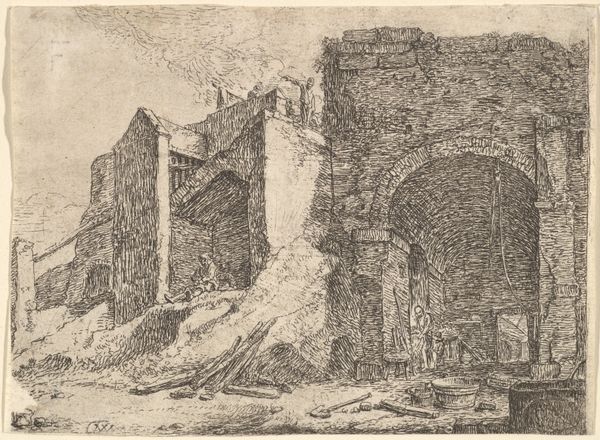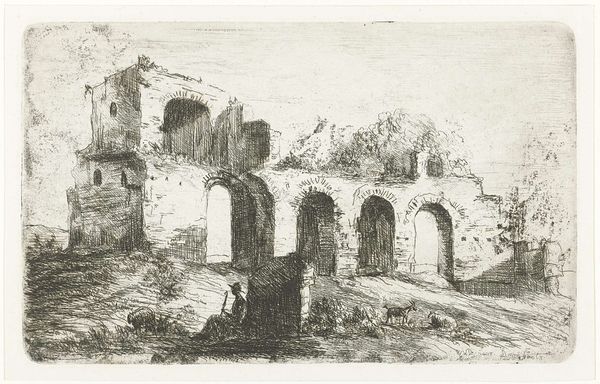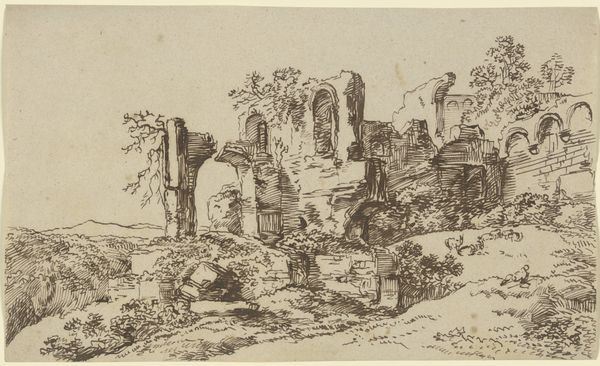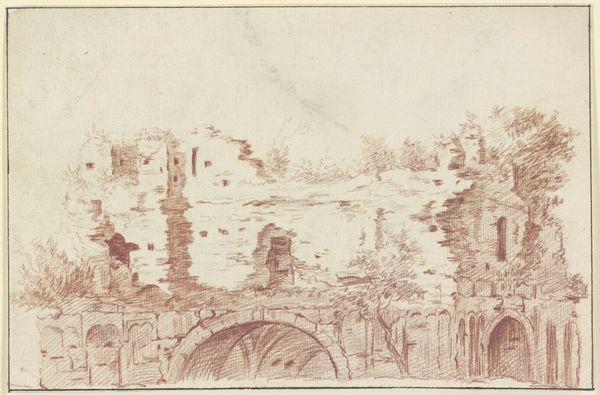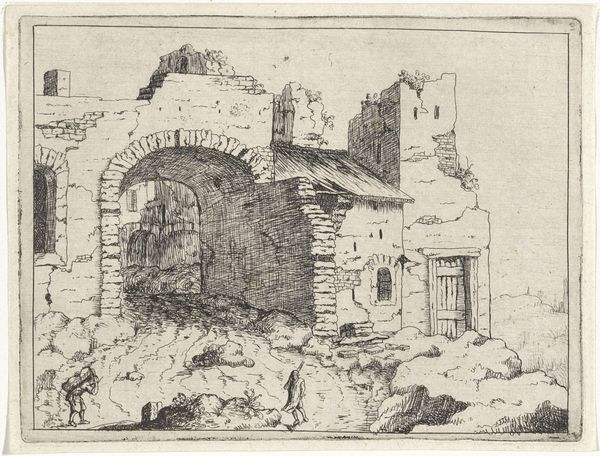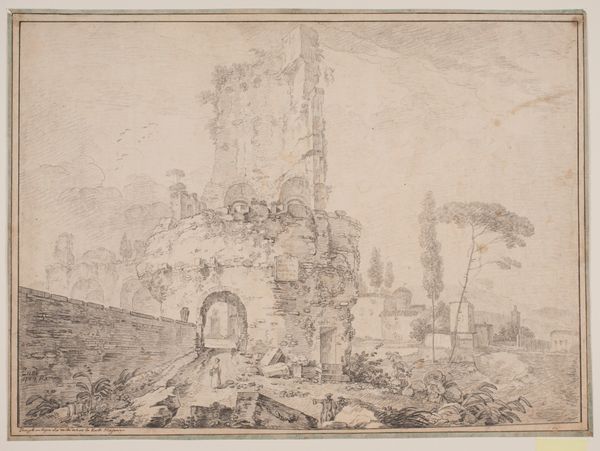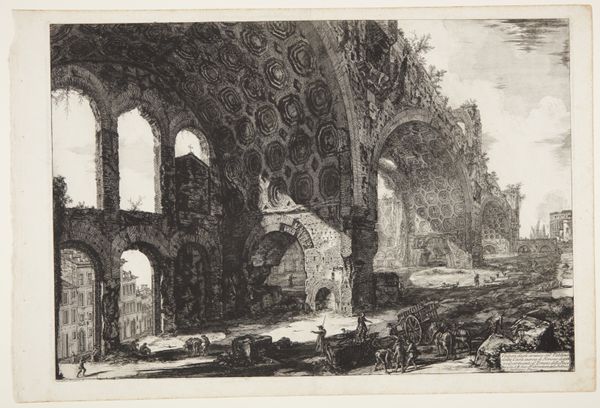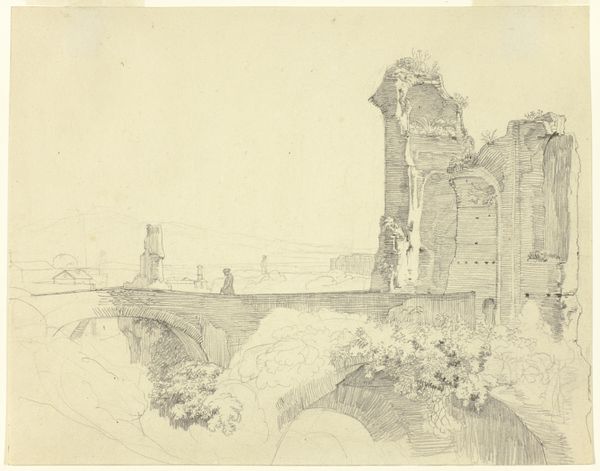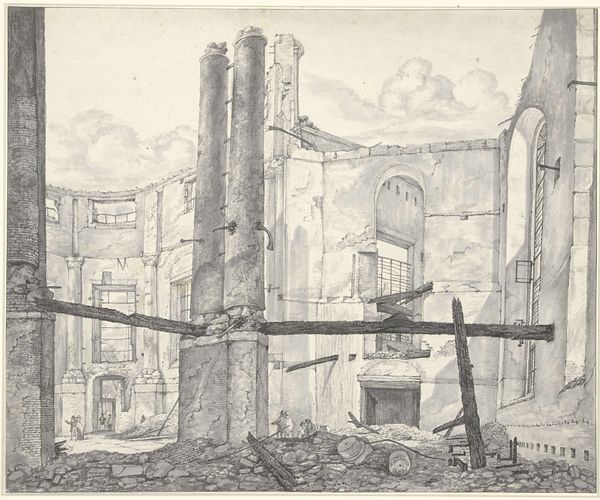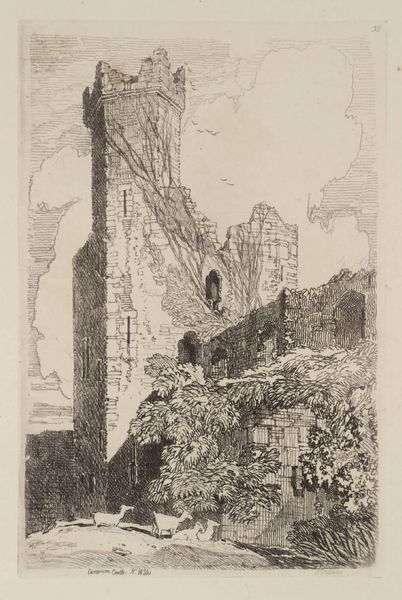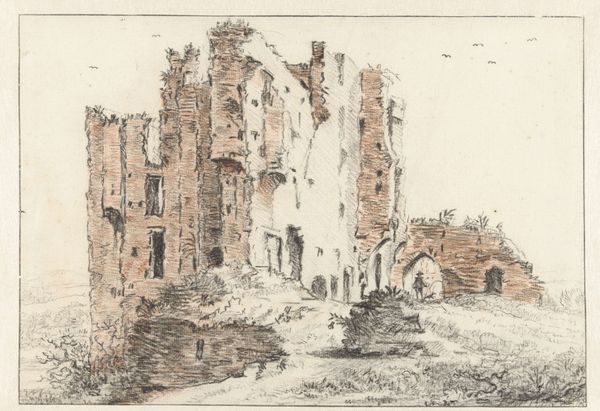
drawing, pencil
#
drawing
#
amateur sketch
#
light pencil work
#
dutch-golden-age
#
pen sketch
#
pencil sketch
#
incomplete sketchy
#
landscape
#
11_renaissance
#
personal sketchbook
#
pen-ink sketch
#
pencil
#
sketchbook drawing
#
sketchbook art
#
realism
#
initial sketch
Dimensions: height 245 mm, width 347 mm
Copyright: Rijks Museum: Open Domain
Govert Jansz. sketched this crumbling ruin on a hill using graphite, capturing more than just a derelict structure; he captured a potent symbol of time's relentless march. The ruin itself, with its broken arches and collapsing walls, speaks of vanished grandeur. This motif of decay is not unique to Jansz. One sees it echoed through the ages, from Piranesi's etched ruins of Rome to Hubert Robert's romanticized depictions of crumbling abbeys. In each, the ruin stands as a memento mori, reminding us of the transience of human achievement. But why this fascination with decay? Perhaps it touches on a deeper, collective anxiety about mortality and the ephemeral nature of existence. We are drawn to these images, subconsciously, as a way to confront and process our fears. This ruin, then, becomes a mirror, reflecting our own inevitable fate, but also sparking a sense of reflection and introspection. A reminder that even in decline, there is a strange, melancholic beauty.
Comments
No comments
Be the first to comment and join the conversation on the ultimate creative platform.

